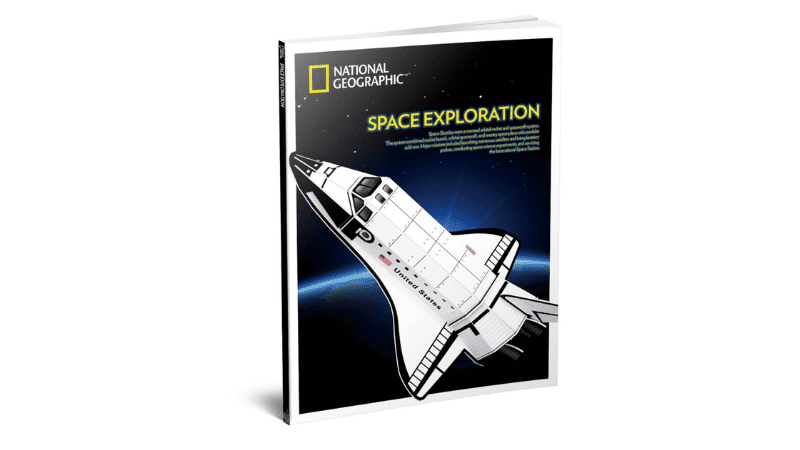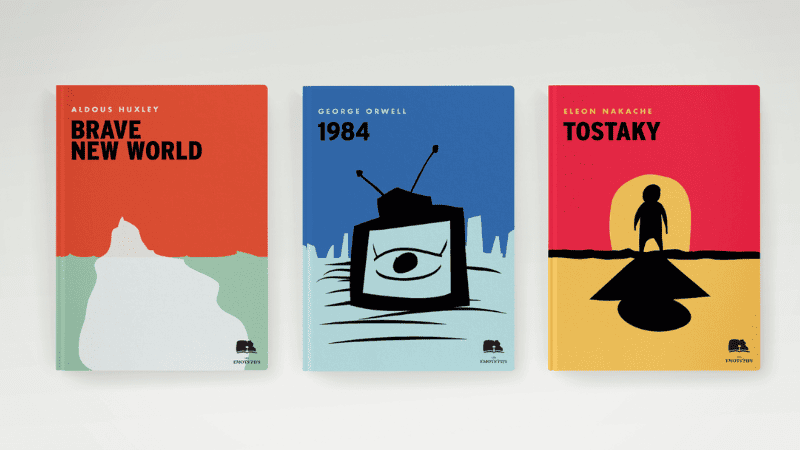Last Updated on November 10, 2023 by Packoi Team
In the digital age, one would think that printing technology will start to become obsolete because most people can just read digital materials. But you might be surprised to know that the demand for books has risen steadily over the years. In fact, it has grown by 100 million copies compared to pre-pandemic levels.

This is proof that despite the option to read digital copies, the printing press will continue to operate. There’s something nostalgic about holding an actual book in your hands. That means people will still look for printed books and other printed materials that they can touch.
While it’s true that readers want the traditional book reading experience, that doesn’t mean the printing technology can’t evolve. If you’re planning your next publication, keep reading.
In this article, you’ll learn more about the evolution of printing techniques and how far we’ve come from Gutenberg’s press. You’ll also get 6 innovative ideas that you can use to impress your readers with new technology in book printing.
From the Gutenberg Printing Press to Modern Printing Technology
The history of the printing press started in the 15th century with a man named Johannes Gutenberg. He is behind the very first printing press, which we all have come to call the Gutenberg press. It’s a movable type of printing press that uses individual metallic letters to allow the printing of multiple books at a faster rate.
Before Gutenberg’s press was introduced, books were reproduced by hand. Every letter, word, and phrase is painstakingly copied by hand. Thanks to Gutenberg’s invention, this long and tedious task is no longer necessary.

The very first printed material that ran through Gutenberg’s press was a bible. Also referred to as the Gutenberg Bible, it started the printing revolution that gave more people access to printed books to read.
Over the years, the Gutenberg press developed into better and more sophisticated machines to make way for greater production of printed books. By the 16th century, more printing presses were created across Europe, which paved the way for greater learning and more access to information. It’s believed that this was one of the catalysts that led to the Age of Enlightenment.
Using the Gutenberg press as an example, inventors in the 18th and 19th centuries started to create and improve on the existing printing technology. One of these is the steam-powered printing press. It allowed more books to be printed and produced at a lower cost and in a shorter amount of time.
Fast-forward to the 20th century and the dawn of the digital age. From digital printing to laser printing and even AR technology, we’ve come a long way from the Gutenberg press. We have the ability to produce more books faster and with better quality.
Ready to Get Custom Packaging for Your Business?
start with a low minimum order quantity
6 Innovative Book Printing Techniques for Your Next Publication
Now that you’ve read how far we’ve come since the first Gutenberg Bible was printed, you can surely appreciate the new printing technology that has become available in recent years. The digital age has given us the technology to explore innovative printing press designs that make it easier to produce printed materials in bulk. It also allows authors and publishers to print small runs without costing too much.
Technology has given us the ability to create printing machines that leave a lot of room for creative printing options. We can print with texture, multiple colors, etc.
Let’s explore the six innovative book printing techniques that you can use for your next publication.
1. Digital Printing
This is a modern printing technique that allows you to reproduce digital images and text on print. Digital printing is a popular option nowadays because it’s cost-effective, has a faster production speed, and allows small runs without costing publishers and authors too much money. This also means you can print on demand—something that’ll be discussed separately later on in this article.

Another feature that makes this printing method stand out is the fact that you can easily personalize books as they’re printed. It’s called variable data printing, which allows you to make books unique. This is a great option for self-published authors because they can print books without needing a huge investment. It also limits the waste that usually comes from massive print runs.
2. 3D Printing
Although this printing method is new, it’s gaining traction in the printing industry for the cutting-edge technology that it uses. As the name suggests, 3D printing allows you to create three-dimensional objects to make your book look creative and appealing to readers.
For instance, if your book is about space exploration, your cover can feature 3D prints of the stars and planets. Or if you want to print a children’s book, you can make the characters three-dimensional on the cover. This will give young readers a multisensory experience with your book. Maybe have it detachable so children can play with it.

Admittedly, this will cost more compared to digital printing. But if you want your book to be remembered for being creative and innovative, this is a great option to consider for your next print job.
3. Print-On-Demand
This technology is a favorite in the printing industry, specifically among publishers and self-published authors. The print-on-demand idea allows for smaller runs, depending on the demand for the book. You can choose to have fewer copies of the first edition of the printed book. Once it gains traction, you can print more of it.
This will remove the need to keep large inventories that are prone to damage. It also lowers the initial investment and minimizes the risk for publishers. Some printers will accept print jobs for confirmed orders; this will give authors zero books in their inventory. It’s a very practical way of printing books.
4. AR Integration
This is another recent advancement in printing technology. Augmented reality is being integrated into printed books to enhance the experience for readers. They can space pages in the book using their mobile devices to make the experience more interactive.
They can get access to additional content, or they can get an animated version of a segment of the book. AR can be used to add videos and interactive elements that will enrich the learning experience of the reader.
It’s also a great idea for children’s books, specifically educational materials.
5. Web-To-Print

Here’s another option that self-published authors can use: The web-to-print technology allows you to customize and order printed materials fully online. You can even use their templates to lay out your books. You can also customize the layout to meet the intended look that you want for your book. Choose the cover, font, color, paper material, and other elements from the options provided.
All these can be done even if you’re miles away from the printer. It’ll still produce high-quality printing that can launch a self-published author to fame.
6. Eco-Conscious Printing
Even the printing industry isn’t exempt from the call to be more sustainable and eco-friendly. This is why part of the technological advancements focuses on how the industry can embrace environment-friendly practices.
Among the options that are made available are the use of soy-based ink and recycled paper. Printers are also looking for ways to minimize waste during production. They are adapting energy-efficient processes to minimize their carbon footprint and promote a more sustainable industry.
Using this method and promoting it in your book is a great way to do your part and attract eco-conscious readers.
Ready to Get Custom Packaging for Your Business?
start with a low minimum order quantity
AI Technology In Printing Books
Artificial intelligence is another type of technology that’s making waves today. It’s said to replace writing as a skill, but the publishing industry isn’t too keen on the replacement. It’s believed that publishers still want authentic writing skills from humans.
What about the printing industry? It’s not a popular technology yet, but it can be expected that AI will soon find a way to make printing books more efficient.
For now, there are two ways that AI technology is useful in printing books.
1. Proofreading and Editing
The new technology may not be accepted as a replacement for human writing, but it can be a great asset when it comes to the time-consuming task of proofreading and editing.
AI can be programmed to spot grammatical and typographical errors. It can also suggest better sentence construction to improve the flow of writing and readability. These are only a few of the improvements that AI can bring.
The efficiency with which it can proofread and edit manuscripts and written works allows for new processes to be done quickly and accurately.
2. Book Cover Designs

Instead of hiring graphic designers to create a visually appealing cover image, you can use AI to do the job. The technology uses the genre of the book and a description of the target readers to come up with book cover options. You can set parameters and prompts so the AI can generate the right images that’ll resonate with the readers and make them feel excited about the contents of the book.
While AI technology is a great way to expedite the publishing and printing processes of books, it’s still important to let humans have the last touch. There’s something about the authenticity of human intervention that makes a book more relatable and enjoyable for readers.
Do You Want to Discover Innovative Book Printing Techniques? Packoi Printing Is an Expert in Modern Printing Technology.
The journey of book printing from the days of Gutenberg’s press has been long and somewhat exciting. While the new technology that we see today seems intimidating, you can find merit in adapting and using it to publish your next book.
What makes it even better is the thought that it’ll only get better from here. So learning to embrace new ideas and innovations in printing is a must if you want to make your book competitive in the market.
If you need help or want to explore your options, Packoi Printing is here to help. We are a sustainable packaging and printing company that, at the very least, helps you meet the eco-conscious preferences of your readers.
Our design team is also up-to-date with the latest technology, so we can help turn your book into a creative masterpiece.
If you wish to know more about our offer, call us. We’ll get back to you with a fair quote right after our conversation.




